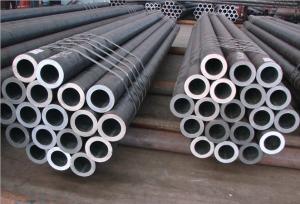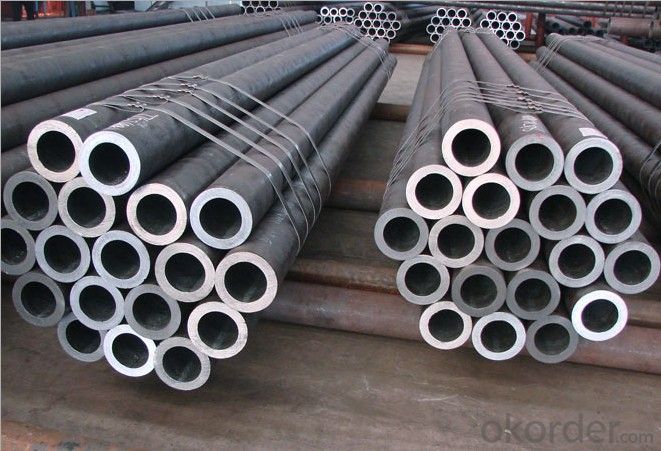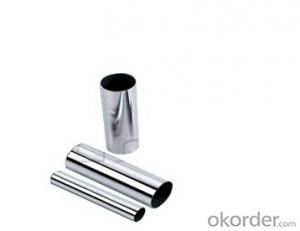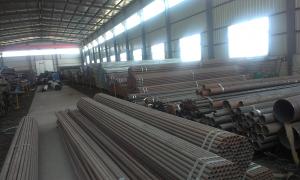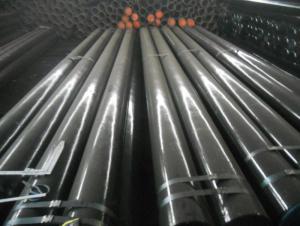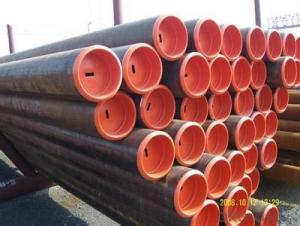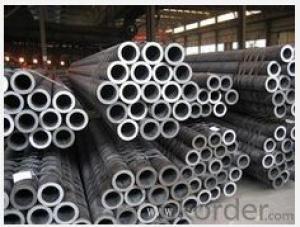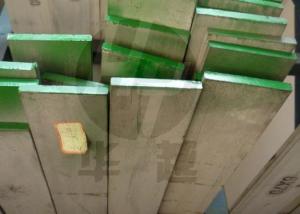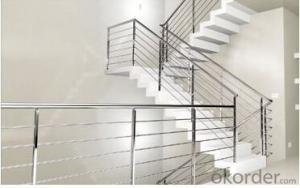Small Diameter Seamless Stainless Steel Tube
- Loading Port:
- Tianjin
- Payment Terms:
- TT or LC
- Min Order Qty:
- 25 m.t.
- Supply Capability:
- 10000 m.t./month
OKorder Service Pledge
OKorder Financial Service
You Might Also Like
We are company that have many years experience and professional manager team and engineer team and sales team, sure we will provide you high quality of pipe and professioanl service.
Seamless pipe possesses a hollow section and without seam around the strip steel. It is made with solid bar or steel ingot by perforating machine. As the facture process does not include any welding, seamless pipes are considered to be stronger and more durable. Generally speaking, seamless pipe has better pressure resistance and security than other classifications, and was usually more easily available than welded pipe.
2、Main Features of the Seamless Pipe:
• High working accuracy
• High strength
• Small inertia resistance
• Strong therming dissipine ability
• Good appearance
• Reasonble price
3、Seamless Pipe Specification:
Standard | GB, DIN, ASTM ASTM A106-2006, ASTM A53-2007 |
Grade | 10#-45#, 16Mn 10#, 20#, 45#, 16Mn |
Thickness | 8 - 33 mm |
Section Shape | Round |
Outer Diameter | 133 - 219 mm |
Place of Origin | Shandong, China (Mainland) |
Secondary Or Not | Non-secondary |
Application | Hydraulic Pipe |
Technique | Cold Drawn |
Certification | API |
Surface Treatment | factory state or painted black |
Special Pipe | API Pipe |
Alloy Or Not | Non-alloy |
Length | 5-12M |
Outer Diameter | 21.3-610mm |
Grade | 20#, 45#, Q345, API J55, API K55, API L80, API N80, API P110, A53B |
Standard | ASME, ASTM |
1) Material:20#(ASTM A 106/A53 GRB.API5LGRB,GB),45#,16Mn,10#.
2) Specification range: OD: 21.3-610mm, WT:6-70mm, length:6-12m or according to the requirement of clients.
3) Executive standards: GB, ASME API5L.ASTM A 106/A53,Despite of the above standards, we can also supply seamless steel pipe with standard of DIN, JIS, and so on, and also develop new products according to the requirements of our clients!
4) Surface: black lacquered, varnish coating or galvanized.
5) Ends: Beveled or square cut, plastic capped, painted.
6) Packing: bundles wrapped with strong steel strip, seaworthy packing.
4、Packaging & Delivery:
Packaging Details: | seaworthy package, bundles wrapped with strong steel strip |
Delivery Detail: | 15-30days after received 30%TT |
5、FAQ of Seamless Pipe:
①How is the quality of your products?
We have many years business experience in this area, and we have professional engineer and manager team and sure we can provide you high quality production and professional service.
②How about price?
Yes, we are factory and be able to give you lowest price below market one, and we have a policy that “ for saving time and absolutely honest business attitude, we quote as lowest as possible for any customer, and discount can be given according to quantity”,if you like bargain and factory price is not low enough as you think, just don’t waste your time.Please trust the quotation we would give you, it is professional one.
③Why should you chose us?
We can give you both.Additionally, we can also offer professional products inquiry, products knowledge train(for agents), smooth goods delivery, exellent customer solution proposals.Our service formula: good quality+good price+good service=customer’s trust
SGS test is available, customer inspection before shipping is welcome, third party inspection is no problem.
6、Seamless Pipe Images:
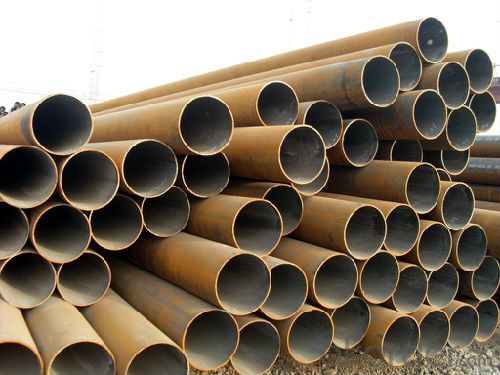
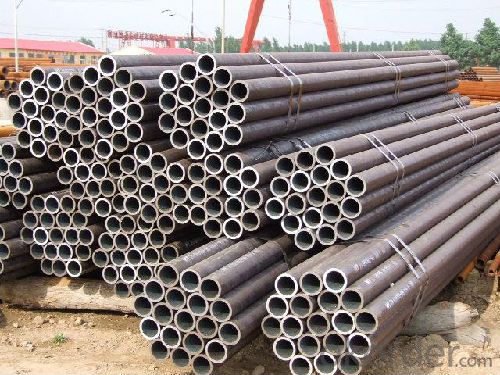
- Q: How do you join stainless steel pipes together?
- To join stainless steel pipes together, there are several methods available, depending on the specific requirements and application. 1. Welding: Welding is the most common and widely used method for joining stainless steel pipes. It involves the application of heat to melt the material, forming a strong and durable bond. Different welding techniques like TIG (Tungsten Inert Gas) or MIG (Metal Inert Gas) welding can be used for this purpose. 2. Compression fittings: Compression fittings are a popular choice for joining stainless steel pipes, especially in plumbing applications. These fittings consist of a compression nut and a ferrule that are tightened onto the pipe, creating a secure and leak-proof connection. 3. Flanges: Flanges are used when a more robust connection is required, such as in high-pressure or high-temperature applications. Two stainless steel pipes are joined together by bolting flanges at the ends, creating a tight and reliable connection. 4. Threaded connections: Stainless steel pipes can also be joined using threaded connections, where one end of the pipe is threaded and the other end is fitted with a threaded pipe fitting, such as a union or nipple. This method is commonly used for smaller diameter pipes or in situations where disassembly may be required. 5. Clamps and couplings: Clamps and couplings are used to join stainless steel pipes temporarily or in situations where frequent disassembly is required. These devices clamp around the pipes and are tightened using bolts or other mechanisms, creating a secure connection. It is important to consider the specific requirements, such as pressure, temperature, and corrosion resistance, when choosing the appropriate method to join stainless steel pipes. Consulting with a professional or referring to industry standards and guidelines can ensure a successful and reliable pipe connection.
- Q: Can stainless steel pipes be used in the agriculture industry?
- Indeed, the agriculture industry can employ stainless steel pipes. As a remarkably sturdy and corrosion-resistant material, stainless steel proves ideal for diverse agricultural applications. For instance, stainless steel pipes find frequent use in agricultural fields for irrigation systems, water distribution networks, and drainage systems. Their resistance to rust, corrosion, and chemical harm guarantees a prolonged lifespan despite the harsh agricultural environment. Moreover, stainless steel pipes offer convenience in terms of cleaning and maintenance, rendering them a favored option for transporting an array of liquids and gases within the agriculture industry.
- Q: Can stainless steel pipes be bent?
- Yes, stainless steel pipes can be bent.
- Q: What are the different types of stainless steel pipe reducers?
- There are several types of stainless steel pipe reducers, including concentric reducers, eccentric reducers, threaded reducers, and socket weld reducers.
- Q: Are stainless steel pipes suitable for swimming pool installations?
- Yes, stainless steel pipes are suitable for swimming pool installations. Stainless steel is a highly durable and corrosion-resistant material, making it an ideal choice for pools where it will be constantly exposed to water and chemicals. It does not rust or corrode easily, ensuring a long lifespan and minimal maintenance. Stainless steel pipes also have a smooth surface, reducing the risk of algae growth and clogging. Additionally, they can withstand high pressure and temperature variations, making them suitable for various pool systems. Overall, stainless steel pipes offer reliability, longevity, and performance, making them a suitable choice for swimming pool installations.
- Q: What is the difference between 2507 and 316 stainless steel pipes?
- The composition and properties of 2507 and 316 stainless steel pipes are what set them apart. 2507 stainless steel, known as a super duplex stainless steel, has a higher concentration of chromium, nickel, and molybdenum compared to 316 stainless steel. This composition leads to improved resistance against corrosion, especially in harsh conditions like seawater or acidic solutions. The increased amounts of chromium and molybdenum also provide excellent protection against pitting and crevice corrosion. On the flip side, 316 stainless steel is an austenitic stainless steel with lower levels of chromium, nickel, and molybdenum compared to 2507. While it still offers decent corrosion resistance, it is not as capable of withstanding extreme conditions as 2507 stainless steel. In terms of mechanical properties, 2507 stainless steel outperforms 316 stainless steel in terms of strength and toughness. This makes it suitable for applications requiring high strength and resistance to stress corrosion cracking. To sum it up, the main differences between 2507 and 316 stainless steel pipes lie in their composition, corrosion resistance, and mechanical properties. 2507 stainless steel is a super duplex stainless steel with exceptional corrosion resistance and higher strength, while 316 stainless steel is an austenitic stainless steel with decent corrosion resistance. The choice between the two will depend on the specific application and environment in which the pipes will be utilized.
- Q: Can stainless steel pipes be used for drinking water applications?
- Certainly, one can utilize stainless steel pipes for drinking water purposes. Stainless steel, being an exceedingly durable and corrosion-resistant substance, serves as an excellent option for conveying drinking water. Its resistance to rust, scale, and corrosion not only helps preserve the water's quality and purity but also guarantees the absence of any detrimental substances seeping into the water, thus ensuring its safety for consumption. Furthermore, the inner surface of stainless steel pipes is smooth, thereby diminishing the chances of bacterial growth and preserving the water's taste and aroma.
- Q: Can stainless steel pipes be etched?
- Stainless steel pipes have the capability to undergo etching, a procedure which involves eliminating a thin layer of metal from the pipe's surface to achieve a desired design or pattern. This is typically accomplished by utilizing an acid or chemical solution that selectively dissolves the exposed metal. However, it is worth mentioning that not all grades of stainless steel are equally suitable for etching. Austenitic stainless steels, specifically 304 and 316, are frequently chosen for etching purposes due to their corrosion resistance and ease of etching. The etching process can also be influenced by various factors, including the composition and thickness of the stainless steel, as well as the chosen method and conditions for etching.
- Q: What is the difference between seamless and seamless annealed stainless steel pipes?
- The difference between seamless and seamless annealed stainless steel pipes lies in the manufacturing process and the resulting properties. Seamless stainless steel pipes are made through a hot or cold rolling process, without any seams or welded joints. This results in a smooth and continuous pipe with high corrosion resistance and strength. On the other hand, seamless annealed stainless steel pipes undergo an additional annealing process after the seamless manufacturing. Annealing involves heating the pipe to a specific temperature and then slowly cooling it, which improves the material's ductility, toughness, and overall structure. This makes seamless annealed stainless steel pipes more suitable for applications requiring higher pressure or temperature resistance, as well as for processes involving bending or forming the pipe.
- Q: What are the different grades of stainless steel used in pipes?
- Pipes commonly utilize various grades of stainless steel, each possessing distinct properties and characteristics. Notable grades include: 1. Stainless Steel Grade 304: Recognized as highly versatile and widely employed, Grade 304 exhibits non-magnetic qualities, exceptional resistance to corrosion, and ease of weldability. Its applications predominantly revolve around sectors emphasizing hygiene and cleanliness, such as food processing plants, hospitals, and the pharmaceutical industry. 2. Stainless Steel Grade 316: Renowned for its unparalleled resistance to corrosion, particularly in environments abundant in chloride or saltwater exposure, Grade 316 frequently finds utilization in marine settings, chemical processing facilities, and coastal areas necessitating robust corrosion resistance. 3. Stainless Steel Grade 321: Grade 321 boasts titanium stabilization, rendering it more impervious to sensitization and intergranular corrosion at elevated temperatures. It commonly serves in high-temperature scenarios, exemplified by exhaust systems, furnaces, and heat exchangers. 4. Stainless Steel Grade 409: Designed specifically for high-temperature applications like automotive exhaust systems, Grade 409 showcases remarkable heat resistance and exhibits low thermal expansion properties, making it an ideal choice for enduring extreme temperatures. 5. Stainless Steel Grade 904L: Grade 904L excels in corrosion resistance, particularly combating pitting and crevice corrosion. Frequently employed in aggressive environments prevalent in chemical processing plants, offshore oil and gas platforms, and pulp and paper industries. These examples merely exemplify the array of stainless steel grades employed in pipe manufacturing. The selection of a particular grade hinges upon the specific application and desired attributes, encompassing corrosion resistance, temperature resistance, and mechanical strength.
Send your message to us
Small Diameter Seamless Stainless Steel Tube
- Loading Port:
- Tianjin
- Payment Terms:
- TT or LC
- Min Order Qty:
- 25 m.t.
- Supply Capability:
- 10000 m.t./month
OKorder Service Pledge
OKorder Financial Service
Similar products
Hot products
Hot Searches
Related keywords
